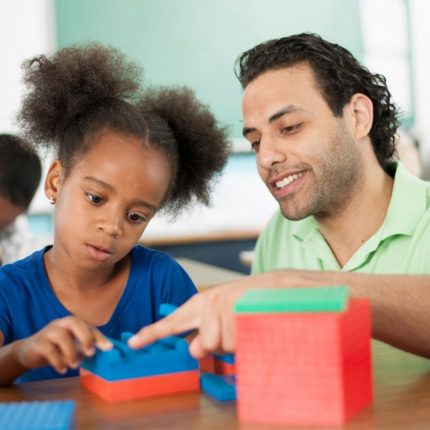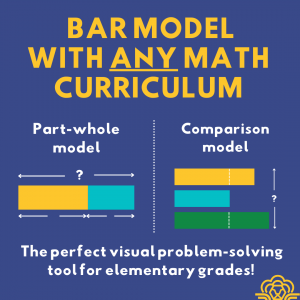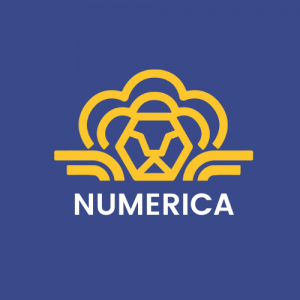
How to Bar Model with Any Homeschool Math Curriculum
April 12, 2021Sponsored post by Numerica Math.
What were your math classes like? Did you dislike math because you had a boring teacher who told you to memorize everything? Or did you like math because your teacher explained all the concepts in a way you understood?
There are two components in any homeschool curriculum: what to teach and how to teach it. When it comes to homeschool math, almost every curriculum from any part of the world teaches the same content. The only difference is how math is taught. Singapore Math’s famous bar modeling method is the perfect example of innovative homeschool math teaching. And because bar modeling is simply a creative way to teach math, the best thing about it is that it can (and should) be taught with ANY math curriculum.
What is Bar Modeling?
#1 Bar modeling is part of the concrete-pictorial-abstract (CPA) approach.
The CPA approach helps children grasp abstract concepts by transitioning them from concrete objects and pictorial representations. Bar modeling is a clever way of maximizing the pictorial stage of the CPA approach, so as to make math less abstract for young children.
#2 Bar modeling is a problem-solving strategy.
Bar modeling helps children visualize the word problem and solve it. Children would draw rectangular boxes to represent quantities and better understand the relationships of different components in a word problem.
#3 Bar modeling is an invaluable teaching tool.
Even though bar modeling is designed as a problem-solving tool, it also helps children to visualize and better understand abstract concepts, such as multiplication and division, fractions, and ratios.
#4 There are two types of bar models.
While there are some online resources that have lists of different types of bar models your child may encounter, there are only two basic types they need to know and understand, the part-whole model and the comparison model. All bar models are a variant or combination of these two types of bar models.
#5 Bar modeling emphasizes processes over procedures.
As a problem-solving strategy, bar modeling is a way to help young children show their thinking, instead of hurrying them to get to a final answer. Paying attention to a child’s thought process and logic is extremely important in math education. Their work can demonstrate what they understand and what they don’t understand so you can better tailor your instruction to them.
When taught and used properly, bar modeling is a powerful tool that will change your child’s math learning journey and possibly your own perspective of math. However, using bar modeling in your math lessons can certainly seem daunting if you have never been taught with those methods before. So how can you start to incorporate bar modeling into your child’s math curriculum?
Tips to Try in Your Homeschool!
#1 Ask open-ended questions.
Instead of posing a question about the sum of 20+25, ask your child how they would approach the problem and then guide them from there. In order to nurture children’s ability to solve problems on their own, we need to teach them how to think for themselves. Bar modeling is merely a tool to help them visualize the problem they need to solve. This brings me to tip #2:
#2 There are no steps needed for bar modeling!
There are multiple resources online that offer guidance on how to teach children to solve word problems that usually include lists of steps like reading the question, drawing the bar models, adjusting the bar models. Having children memorize steps defeats the whole purpose of problem-solving! Young children can be taught to use bar modeling, but they should also be encouraged to solve problems in their own ways. Let them take the lead!
#3 Complement bar modeling with manipulatives and actual objects!
Bar modeling helps to transition children from the pictorial stage to the abstract stage. But if your child is struggling with bar models or more advanced concepts, it’s time to bust out those manipulatives! In order for children to fully grasp an abstract concept, there are two layers of transition that needs to occur. The first is a literal transition: when children are able to draw the 5 apples in front of them. The second is a bigger leap: when children are able to accurately represent 5 apples with an abstract version of the objects, i.e. a 5-unit bar model.
#4 Start in first grade.
In Singapore, children are taught bar modeling starting from first grade. Bar modeling can be taught in conjunction with number bonds and is a great tool to visualize the concept of addition and subtraction. Starting your child early also helps them develop visualization and problem-solving skills.
#5 Have some fun yourself!
Before you teach your child, try solving the word problems with bar modeling yourself! Think about any other ways you may draw your bar models differently and you can even incorporate your models into your homeschool lesson plan. Try presenting your child with a model and ask them what kind of word problem they can come up with. Or get your child to come up with their own bar models and do a comparison. This is a chance for you to interact with your child and inject some fun into your homeschool math lessons! There is no limit to what you can do so get creative!
As much as bar modeling is an innovative way to teach math, it also reflects a unique philosophy to math education. Bar modeling fosters a learning environment that provides opportunities for children to discuss math concepts, explore different ways to solve problems, and think, not memorize! Incorporating bar modeling into your homeschool routine is not only a way to spice up your math lessons, but it might also be a chance for you to learn something new together with your child!
—
 Numerica Math is a learning center that focuses on Singapore Math pedagogy and specializes in adapting Singapore’s curriculum for American children. If you have any questions about bar modeling or math teaching tips, we would love to hear from you! We are currently offering a 6-week virtual bar modeling course for children in grades 3-6. Our unique curriculum is designed by teachers who know exactly what it feels like to be learning bar modeling in elementary school. Classes are guaranteed to be visual, hands-on, and fun!
Numerica Math is a learning center that focuses on Singapore Math pedagogy and specializes in adapting Singapore’s curriculum for American children. If you have any questions about bar modeling or math teaching tips, we would love to hear from you! We are currently offering a 6-week virtual bar modeling course for children in grades 3-6. Our unique curriculum is designed by teachers who know exactly what it feels like to be learning bar modeling in elementary school. Classes are guaranteed to be visual, hands-on, and fun!
Latest Posts

While nearly every college and university today is eager to accept homeschooled students into their institutions, homeschooling families need to understand that their student’s application…
Read more >
Guest Post by Gabriel Morse For several years, I sat for long hours every day behind one of those battleship gray desks in a windowless, dull, gray office. The pay was enough to take care…
Read more >
This post is sponsored by Little Monsters Universe. I'm Tina Salmanowitz, an advocate for homeschooling and science education. With over a decade of experience as a science educator (in class…
Read more >

